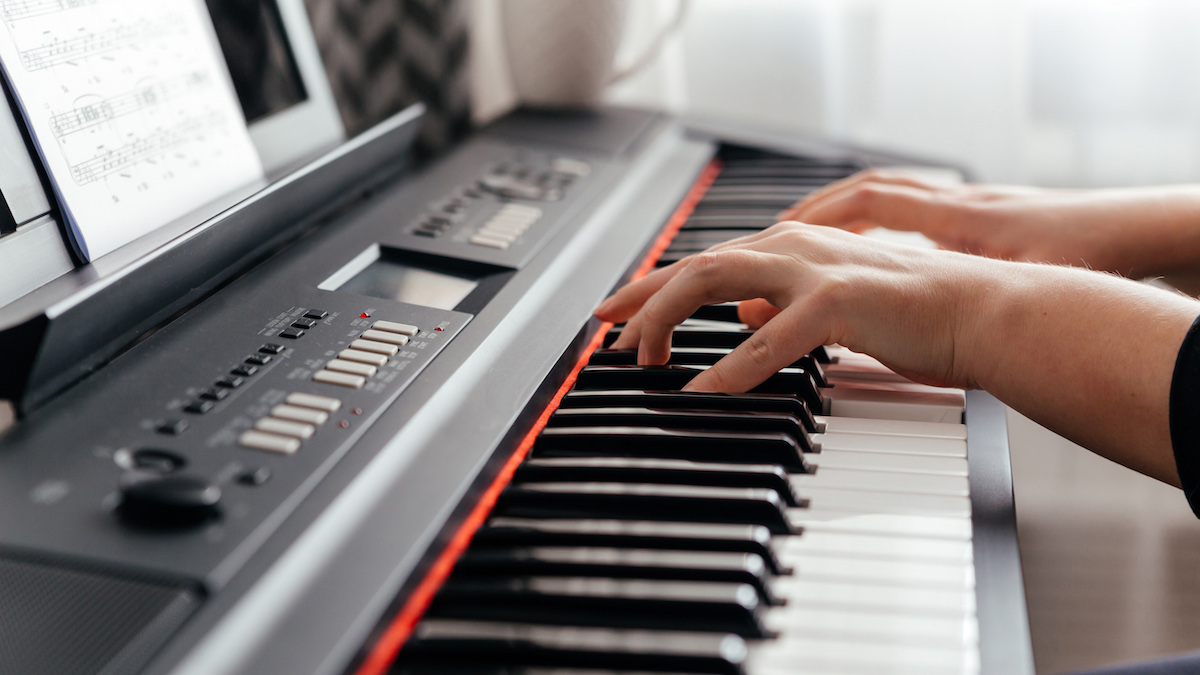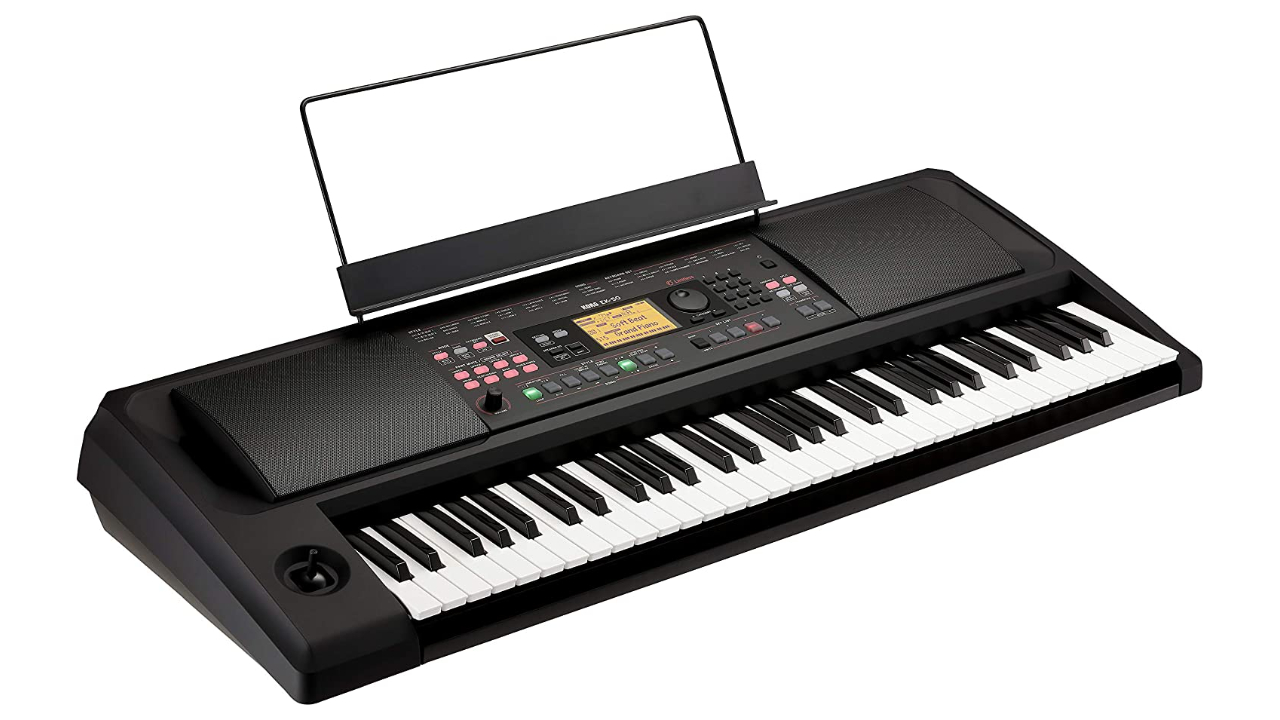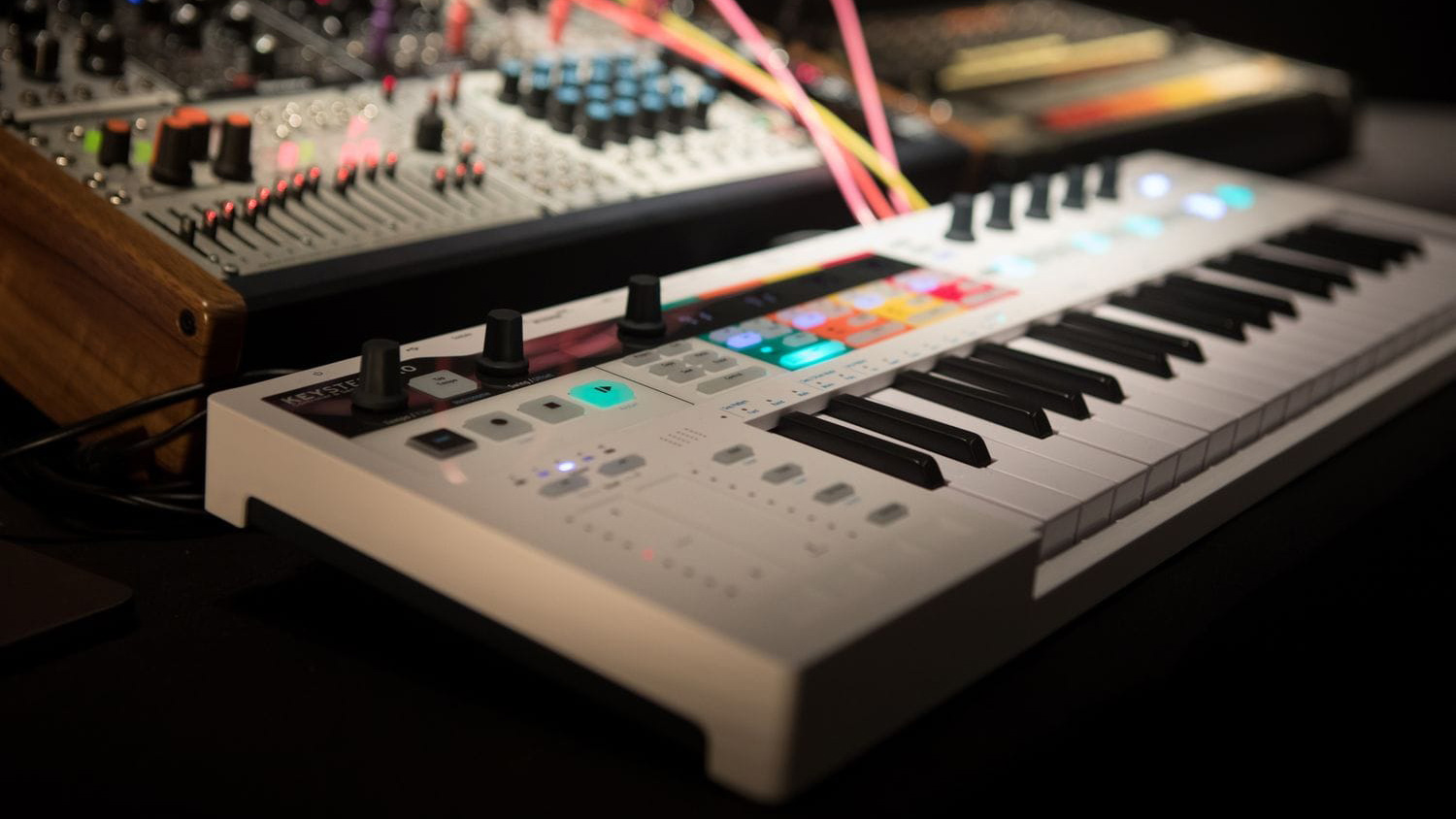Digital piano vs keyboard: what’s the difference?
We weigh up the pros and cons of choosing a digital piano or electronic keyboard for your next instrument

Partly thanks to the pandemic resulting in many more of us having more spare time on our hands than usual, there have never been more people interested in taking up learning the keyboard. This has in turn led to a global upsurge in sales of digital pianos and portable electronic keyboards. Yet for many embarking on their musical journey for the first time, the question of which keyboard to buy can be a thorny one. With a marketplace packed full of options, making that important first decision can be a bewildering business.
The question at the very start of the decision-making process should be whether or not a digital piano or electronic keyboard would be a more suitable choice for your needs. Hang on though, we hear you cry, aren't they pretty much the same thing? Well, yes and no. There are in fact a few very important distinctions that separate one from the other, so in this digital piano vs keyboard guide we'll try and highlight those differences and help you to make a more informed decision when it comes to buying the right kind of instrument for you.
Case study
Early last year I got a call from my elderly mother asking me to come over and help her with a new electronic keyboard she'd bought by mail order. Mum has played the piano since her teens but had recently moved into a small apartment and didn't have room to take her old Yamaha Clavinova piano with her. So she'd ordered a cheap, 61-key portable arranger keyboard thinking that it would be a good substitute, but it was so complicated that she couldn't figure out how to get the piano sound she wanted out of the selection of over 500 sounds it contained.
The keys were not velocity-sensitive and it was obvious that it wasn't the right instrument for her, so we sent it back. Instead, I ordered her a Yamaha NP-12 - a compact, 61-key, velocity-sensitive digital piano with only a few, high-quality acoustic piano sounds on board, a true 'switch on and play' instrument that she was instantly much more at home with and that she still plays daily to this day.
So, what’s the difference?

The distinction between a digital piano and an electronic keyboard isn't completely black and white - there is something of an overlap between the two. Some digital pianos also have features that are found on keyboards - for instance, Roland's FP-10 beginner digital piano has a Bluetooth feature that allows you to stream audio from a mobile device through the onboard speakers so that you can play along to your favourite songs using one of its ten ultra-high-quality piano sounds.
It also has a built-in song recorder that can capture and play back your performances. Meanwhile, Casio’s 88-key CDP-S350 portable digital piano also blurs the lines between the two camps by offering 700 instrument tones and over 200 auto-accompaniment styles in addition to its authentic grand piano tones and fully-weighted, hammer-action keyboard.
Meanwhile, practically every electronic keyboard you can buy today will feature a handful of decent acoustic piano tones. As an example, Yamaha's PSR-E373 keyboard features over 620 different voices, but has a dedicated button on the front panel that can be used to call up a remarkably convincing acoustic grand piano sound, sampled from a real Yamaha CFX Concert grand piano, with a single button press. However, because it has only 61 keys, hundreds of other voices and an auto-accompaniment system that lets you play alongside an entire virtual band with just one finger, it falls firmly into the electronic keyboard category, so you wouldn’t really call it a piano.
Want all the hottest music and gear news, reviews, deals, features and more, direct to your inbox? Sign up here.
So while some digital pianos could also be thought of as electronic keyboards, not all electronic keyboards are digital pianos. Let’s explore why.
Quality vs quantity?
Digital pianos are designed to replicate the look, sound and feel of an acoustic piano, with the obvious advantages that they're much lighter (and therefore more portable), don't require tuning and can be used with headphones so you don't annoy your neighbours while practising. They're often limited to just a handful of high-quality sounds that offer a variety of different acoustic piano tones, as well as a smattering of things like electric pianos, organs, strings and harpsichords.
Each of the 88 keys might feature multiple samples of that key recorded from a real piano, at multiple volume levels, played with varying degrees of pressure and with the sustain pedal depressed, all of which combine to emulate the response of the real thing with the highest possible degree of authenticity. Alternatively, companies like Roland use virtual modelling engines such as their SuperNATURAL engine for the piano sounds on their high-end models.

Electronic keyboards, on the other hand, tend to focus not just on piano tones, but also everything else besides, with the voice count often running up into the high hundreds. Keyboards are also much more likely to feature auto-accompaniment features such as a variety of pre-programmed rhythm patterns to play along to, single finger chords and bass accompaniment, pre-programmed intros, fill-ins and endings, arpeggiators, auto-harmonisers and much more besides.
Both types of instrument share a piano-style black and white keyboard, speakers that the sound comes out of, a display screen and a front panel containing a number of buttons used to access the controls. Aside from these basic similarities, let's take a look at some specific features that set digital pianos and electronic keyboards apart from one another.
Digital piano vs keyboard: number of keys
Acoustic pianos nearly all have a full set of 88 keys, so the most obvious distinction between a digital piano and an electronic keyboard will be the number of keys that it has. Digital pianos will have been designed to replicate the acoustic piano playing experience, and so will most likely also have 88 keys. There are some exceptions like the Yamaha NP-12, for example, which has 61 keys but is classed as a digital piano because of the sounds it contains, which are mostly acoustic piano tones. On average, electronic keyboards will have 61 keys, a span of five octaves, which is small enough to be portable, but still wide enough to accommodate two-handed playing styles, so plenty big enough for beginners to learn on.
Digital piano vs keyboard: key action

The term key action describes how heavy your keyboard's keys are to press down. An acoustic piano has quite a heavy action, with each key weighted differently according to where it is on the keyboard - lower notes are heavier, and the key weight reduces as you go up towards the higher notes at the right end of the keyboard. The weight also affects how the keys bounce back after being played, which forms an integral part of how a real piano feels to play, and in turn informs the technique involved in learning to play the piano properly. Because of this, digital pianos nearly all feature weighted or semi-weighted keys to emulate the feel of their acoustic counterparts.
In contrast, most electronic keyboards have lighter, 'synth action' keys that don't require as much effort to press down, so these are usually much easier for beginners to get to grips with.
Digital piano vs keyboard: velocity sensitivity
When you play an acoustic piano, the strength and loudness of each note depends on how hard you hit the key when you play that note. The volume of the sound is said to be sensitive to the velocity of each keystroke - play gently and you get soft notes, hit the keys hard and the sound is much more forceful.
Digital pianos and most decent electronic keyboards emulate this behaviour by having sensors beneath each key that detect the forcefulness of your playing and make the sound louder or quieter accordingly. This feature is called velocity sensitivity, and it's a pretty important item on your checklist if you want your playing to have any kind of dynamic expressiveness. Without it, the sound coming out of your keyboard won’t change in volume no matter how hard or soft you play.
Digital piano vs keyboard: types of sound/voice

As a rule of thumb, digital pianos tend to have far fewer voices than electronic keyboards, although there are some exceptions. Since real acoustic pianos only have one sound, digital pianos tend to continue this trend by offering fewer onboard sounds and concentrating more on quality rather than quantity. Many digital pianos will offer a handful of different acoustic piano samples, a few electric piano sounds such as Fender Rhodes, Wurlitzer and FM-style E-piano tones, some organ voices and maybe a clavinet or a harpsichord. There may also be a string patch or two that can be layered up and played simultaneously with another sound, handy for playing ballads or ambient music.
Conversely, the stock in trade of the electronic keyboard is bucketloads of voices representing every possible instrument you can think of and then some. These often include a generous helping of synthesizer tones, as well as sound effects and special 'super articulation' voices designed to more realistically mimic acoustic instruments through the addition of samples of additional playing techniques, like bass slides, flute trills or guitar harmonics, that can be added into your playing.
Digital piano vs keyboard: auto-accompaniment
Possibly the one feature that most defines which side of the keyboard/piano fence your instrument falls on is auto-accompaniment. This is where a keyboard will have a number of built-in styles or genres of backing track for you to play along to, effectively turning you into a one-man band. How it usually works is you use your left hand to select a chord for the virtual band to play, often just with one finger, while you play a melody over the top with your right hand. The auto-accompaniment section will take care of the drums, bass and very often some sort of keyboard or guitar part that follows your chord selections. Your keyboard will often have many hundreds of styles available (the Yamaha PSR-E373 has over 200 styles) in a wide variety of different genres from across the globe.
The auto-accompaniment features found on today's keyboards are a lot more sophisticated than the slightly naff early offerings that appeared on home organs of the 1980’s. We now have cleverly programmed intros and fills for each genre, some of which sound extremely current and professional. Even the cheesiest genres can be a lot of fun to play along with, even if you're a seasoned player, and the way they can highlight which melody notes work with different chord shapes can be very educational from a music theory point of view. Anything that can be done to make learning an instrument more fun and interesting for a child or someone just starting out, the more involving the whole process is likely to be, and the more likely they'll be to stick with it and progress further.
So an important consideration when choosing an instrument is whether or not you'll need this kind of feature. If all you're interested in is learning classical piano, you may find auto-accompaniment completely unnecessary, so would probably be better off targeting something more in the digital piano category. If you're just looking to learn how to play any keyboard instrument and have some laughs along the way, auto-accompaniment could be a great feature for you.
Digital piano vs keyboard: MIDI controllers

A third category of keyboard worth mentioning is the MIDI master keyboard controller. These don't usually have any speakers or make any sounds of their own, but instead are used to connect to a computer in order to play the sounds generated from software synths and record MIDI performances into your computer's Digital Audio Workstation (DAW). They can go from tiny desktop keyboards with 25 mini synth-action keys right up to fully weighted 88-key controllers with a keyboard action that's just like an acoustic piano. Since MIDI controllers don't make any sound - their sole purpose is to transmit MIDI data - you should avoid these if you want a standalone keyboard that you don't want to hook up to a computer.
Digital piano vs keyboard: summary
To sum up then, the distinction between a digital piano and an electronic keyboard is fairly clear. Broadly speaking, a digital piano will have weighted or semi-weighted keys - usually 88 of them - and the sound set will be sparser and more focussed around a high-quality acoustic piano tone. There's less likely to be auto-accompaniment features on board, although there may be a few pre-programmed drum tracks to play along to.
An electronic keyboard in general will have fewer keys - somewhere between 49 and 61 in most cases - with a lighter, more synth-like action that's easier to play for beginners. Because it's a more compact instrument, it'll be more portable and most likely have the ability to run on batteries. There'll be hundreds of onboard voices to choose from, encompassing almost every instrument type you can think of and then some, and most likely some form of auto-accompaniment in a broad range of styles.
Whichever type of instrument you end up choosing will depend largely on what you want to use it for. For just a fun music making experience and to learn the basics, an electronic beginner keyboard may be more suitable. If you're tipping your hat more towards learning how to play the piano without all the literal bells and whistles, however, you might be better off with an actual digital piano.
Dave has been making music with computers since 1988 and his engineering, programming and keyboard-playing has featured on recordings by artists including George Michael, Kylie and Gary Barlow. A music technology writer since 2007, he’s Computer Music’s long-serving songwriting and music theory columnist, iCreate magazine’s resident Logic Pro expert and a regular contributor to MusicRadar and Attack Magazine. He also lectures on synthesis at Leeds Conservatoire of Music and is the author of Avid Pro Tools Basics.
